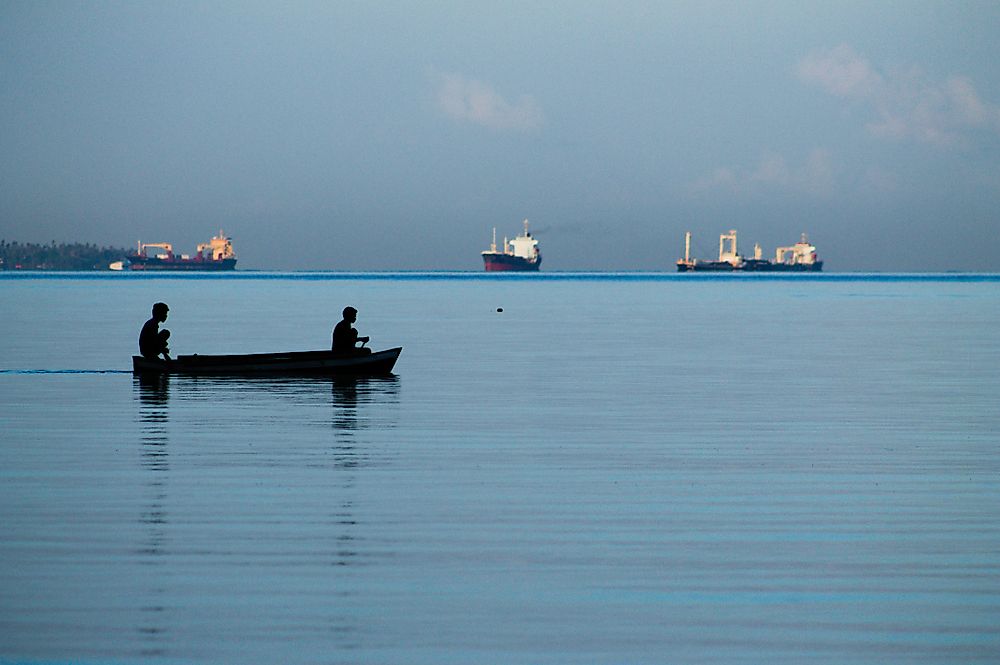What Are The Biggest Industries In East Timor?

East Timor is a sovereign state found in South East Asia. It is also known as Timor-Leste. It is made up of part of the Island of Timor and the neighboring islands of Jaco, Oecusse, and Atauro. The country measures about 5,400 square miles in size. According to the World Bank, East Timor is a low-economy country with a medium level of human development. With a population of 1.296 million estimated in 2017, more than 20% of the population is unemployed, and more than 50% live on less than $1 per day.
In 2012, the country's GDP was an estimated $1.293 billion with GDP per capita estimated at $3,620. In the same year, agriculture accounted for 32.1% of the GDP while industry accounted for 12.9% of the GDP and the service industry accounted for 55% of the country's GDP. The country still suffers the consequences of decades of a liberation struggle against Indonesia which displaced thousands of civilians and severely destroyed up to 70% of the economic infrastructure. East Timor has a market economy that relies on the export of a few commodities including coffee, marble, sandalwood, and petroleum among others.
Agriculture
Agriculture accounted for 32.1% of the GDP according to a 2017 estimate. However, as of 2003 only approximately 190,000 hectares, which is 12.8% of the land area of East Timor was arable land. East Timor's terrain mainly consists of rugged mountains, dry grassland, savannah forests, and coastal lagoons. Due to these reasons and an unreliable climate, most of the farming is at a subsistence level. In the few fertile areas, mostly to the south of East Timor, primary crops include cassava, cowpeas, corn, and sweet potatoes. In the lowlands, farmers utilize irrigation systems to cultivate rice. Farmers usually trade any excess produce in the local markets with maize and rice being the leading products. Coffee is the most important cash crop in the country. Coffee is the second largest exporter in East Timor after petroleum and contributes $10 million per year to the economy. East Timor is ranked the 40th largest producer of coffee in the world with purchasers including the U.S. through Starbucks. About 67,000 households were estimated to grow coffee in 2009. Other crops exported include cocoa and cinnamon, in which the country is ranked 6th and 50th producer respectively.
Oil and Gas
Significant deposits of petroleum and natural gas lay in the waters of East Timor. Revenue from the oil and gas is set to increase substantially as East Timor has announced the cancellation of an agreement with Australia which gave Australia 50% of the revenue since 2006. While the country now enjoys the income from the oil and natural gas, very little of it goes to the development of rural areas.
Manufacturing
When East Timor gained its independence from the Portuguese, before the Indonesian invasion of 1975, the country was self-sustaining in terms of food and income from coffee export and various industries. The manufacturing sector consists of industries such as printing, handicrafts, soap manufacturing, and woven cloth. These industries employ the majority of the urban population and contribute up to 12.9% of the GDP. Since independence, the industrial sector has been undergoing restoration, and a 2005 estimate sets the industrial production growth rate at 8.5%, and this is important to the economy as it creates much-needed employment while also utilizing the raw materials provided by the agricultural sector.
Prospects Of The East Timor Economy
For such a young nation, East Timor is firmly on the path to self-reliance although there remains work to be done. It must start with the establishment of social, economic, and legal infrastructure to facilitate economic stimulus through trade and industry. The country has been undertaking National Development Plans with specific objectives such as economic growth and alleviation of poverty, development of the private sector, and building of local institutions. Such programs have already shown results as the country has seen a steady GDP growth which was 2.2% in 2018. The East Timor economy is heavily reliant on the oil and gas which are set to increase in the future.











